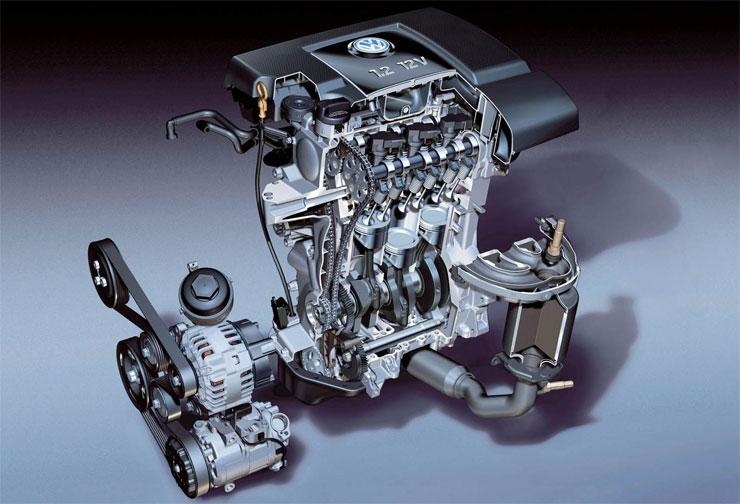
Three cylinder engines. Review and application
Content
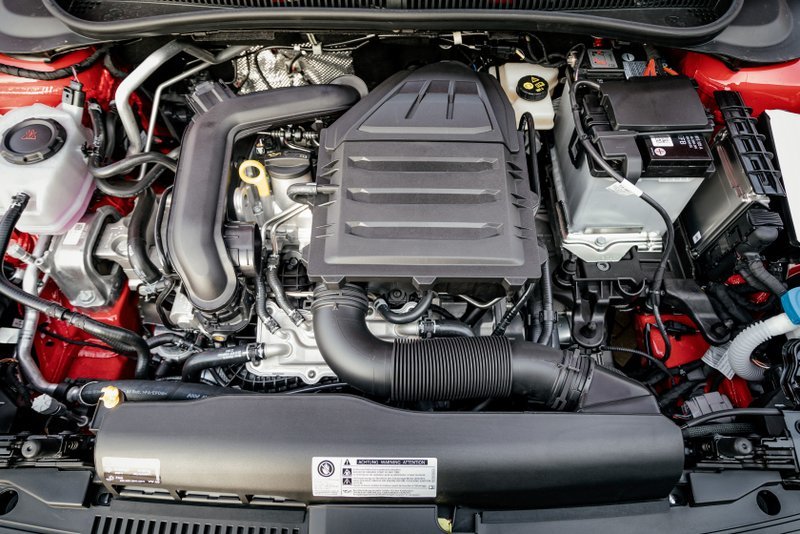 The Fiat 126p had a two-cylinder engine, and that was enough, because the Poles took their children to the city, to sea holidays and even to Turkey, Italy or France! So is the three-cylinder version so criticized by many Internet users really an excess of environmental dreams over the requirements of driving comfort?
The Fiat 126p had a two-cylinder engine, and that was enough, because the Poles took their children to the city, to sea holidays and even to Turkey, Italy or France! So is the three-cylinder version so criticized by many Internet users really an excess of environmental dreams over the requirements of driving comfort?
Three-cylinder engines a few years ago
Anyone who has had the opportunity to drive a 1-107 Toyota Aygo, Citroen C2005, or Peugeot 2014 gasoline car probably remembers the culture of the 1,0 three-cylinder engine. Driving away, it seemed that the engine would break down, explode, explode. Only when the engine speed reached about 2000 rpm did the unit level out to such an extent that drivers got the impression that they were driving a “replacement car” and not an “exclusive mower”. So what if the technical data indicates a power of about 70 liters. cranked engine" that we had when loading. Since then, my (and many Internet users') aversion to three-cylinder engines was born.
Reduction is an ecological path, too thorny and tortuous
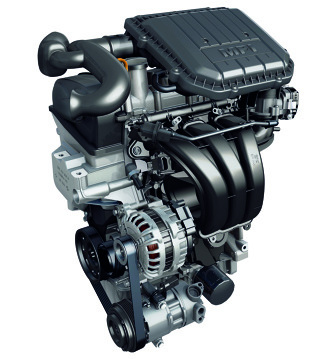 Since achieving lower fuel consumption has become a rule-driven obsession of every manufacturer, the principle of downsizing has been developed, i.e. reduction in engine size while increasing its power. The aim of this solution was precisely to reduce fuel consumption, as well as to reduce CO2 emissions.
Since achieving lower fuel consumption has become a rule-driven obsession of every manufacturer, the principle of downsizing has been developed, i.e. reduction in engine size while increasing its power. The aim of this solution was precisely to reduce fuel consumption, as well as to reduce CO2 emissions.
The development of this system has been made possible by ever more advanced power systems, and this technology is based on direct fuel injection and a turbocharger. Direct fuel injection achieves a uniform and precise atomization of the air-fuel mixture in the combustion chamber, with the benefit of efficiency, and thanks to the turbocharger, we get a more linear power curve, without acceleration jumps.
Unfortunately, the situation is worse with engines that do not have a turbocharger. Although the new injection systems and injection and ignition maps allow for a torque of 95 Nm, which is already available in the lower rev range, running the engine from the very beginning to about 1500-1800 rpm is still not very pleasant. However, as the manufacturers boast, the engineers managed to reduce the moving masses in the design of the connecting rods compared to previous three-cylinder engines, and the connecting rods and pistons with bottom guides are so optimized for weight that without sacrificing comfort, the balance shafts commonly used on engines could be dispensed with. with three cylinders. However, this is a theory. In the second decade of the XNUMXth century, we must notice: these engines are indeed much better than twenty years ago, but still there is a real abyss between them and the four-cylinder versions.
Fortunately, units without a turbine are found only in A-segment cars (up!, Citigo, C1) and the cheapest B-segment versions, i.e. models that are operated gently and mainly in the city.
If one wants to have a B-segment car with better driving performance, now one can buy a more expensive version of this segment, with a turbocharged engine, and at the same time have a higher engine culture (for example, the Nissan Micra Visia + costs with engine 1.0 71KM - PLN 52 and 290 turbo 0.9 HP - PLN 90).
Three cylinders - turbine and modern technology
A much larger number of engines available on the market today are turbocharged. In the case of the most popular engines of the VW group, these are 1.0 units with the following capacities: 90 KM, 95 KM, 110 KM and 115 KM, in Opel these are 1.0 engines with 90 KM and 105 KM, and in the case of the version of the PSA group - 1.2 PureTech units with a power of 110 and 130 hp As an example of new research, it is worth citing the design data of the VW unit:
The four-valve cylinder head in engines is made of aluminum alloy. The valves are located at 21 degrees (inlet) or 22,4 degrees (exhaust) and are actuated by roller tappets. The exhaust manifold is integrated into the cylinder head as the design allows the engines to reach optimum operating temperature faster. Because the exhaust ports converge inside the head at the center flange, the coolant heats up faster during cold starts. However, during normal operation, the exhaust gas stream cools faster, allowing the engines to operate with an optimum fuel-to-air ratio of lambda = 1. As a result, exhaust emissions are reduced and fuel consumption is reduced.
It seems, therefore, technologically ideal, but ...
Not every engine fits... every car
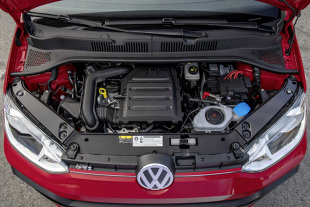 Unfortunately, this environmental campaign for the use of "green standards" has made three-cylinder engines the cure for all ills. In countries with a higher environmental culture than Poland (where car scrap, which has served its time in the countries of civilization, is imported with open arms without control), emission standards apply and new environmental models are promoted more than versions with increased CO2 emissions. However, often this is just "paperwork".
Unfortunately, this environmental campaign for the use of "green standards" has made three-cylinder engines the cure for all ills. In countries with a higher environmental culture than Poland (where car scrap, which has served its time in the countries of civilization, is imported with open arms without control), emission standards apply and new environmental models are promoted more than versions with increased CO2 emissions. However, often this is just "paperwork".
See also: How to save fuel?
Having had the opportunity to test a lot of 208-cylinder toddler cars such as: Up!, Citigo, Skoda Rapid, Peugeot 3, Opel Corsa, Citroen C3 and C1.0 Aircross, I think 110-cylinder engines are a really great choice (especially turbo options). Not only are the cars really fuel-efficient with a gentle tap on the gas pedal, but also when driving vigorously, you can experience the benefits of turbocharging and “kick” during acceleration. In addition, these models are usually considered versions used in the city and for small weekend climbs. I have particularly fond memories of the Skoda Rapid with the 4,7 100 KM DSG engine, which was ideal due to the size of the model (tested in the summer when I loaded the bikes inside), fuel consumption and driving dynamics. (after all, this is a rather large car, and it consumed 55 l / XNUMX km), and ... a XNUMX-liter fuel tank.
Read also: Testing Mazda 6 with SKyActiv-G 2.0 165 hp gasoline engine
However, the use of a small three-cylinder engine in larger cars is a complete misunderstanding. As I tested on the Skoda Octavia 1.0 115 KM with a DSG gearbox, driving is not an economical smooth movement, but a peppy start at every traffic light. This is due to the low pre-turbo torque. As a result, while driving, we add gas to move a heavy, large car and ... nothing. So we add more gas, the turbine kicks in and... we get a dose of torque on the wheels that makes us break traction. It is characteristic that the version with this engine was no more economical in the city than other models, but on the highway it was less energetic, less flexible and ... - as overly stressed - more fuel-intensive.
This proposal of "small green motors" as the embodiment of the environmental aspirations of state governments is currently a real scourge. How to explain that the Skoda Octavia model uses a 1.0 115K (3-cyl), 1.5 150KM and 2.0 190KM gasoline engine (245 RS is associated with a significant reconstruction of components), and in the Opel Astra 1.0 105KM (3-cyl. cyl), 1.4 125 km, 14 150 km and 1.6 200 km, while the Peugeot 3008 SUV has engines of 1.2 130 km (3-cylinder) and 1.6 180 km? Such a huge spread in engine supply is the result of the desire to get low CO2 emissions and to get an ultra-cheap offer in the market through discounts on the low (paper) option. It is characteristic that versions with the weakest 3-cylinder engines are usually only in the cheapest equipment options.
Customer opinion
At the moment, models with modern three-cylinder engines have been on the market for a short time to find many opinions, but here are some:
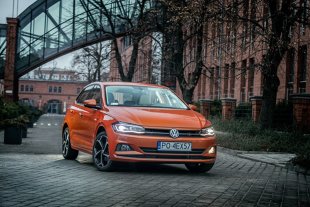 Citroen C3 1.2 82 km - Three cylinders are heard, but personally I do not mind. Acceleration to 90/100 is fine and it's normal. After all, this is only 82 horses, so do not expect miracles. The engine is tiny, simple, without a compressor, so I hope it will last you a long time ”;
Citroen C3 1.2 82 km - Three cylinders are heard, but personally I do not mind. Acceleration to 90/100 is fine and it's normal. After all, this is only 82 horses, so do not expect miracles. The engine is tiny, simple, without a compressor, so I hope it will last you a long time ”;
Volkswagen Polo 1.0 75 HP – “Economical engine, only growls at a cold start. In a busy city, on highways without problems, 140-150 km / h without a howl ";
Skoda Octavia 1.0 115 hp - “A car on the highway burns a meager amount of fuel, unlike driving around the city, here the result is very disappointing” (probably, the user is prone to ultra-quiet driving on the highway - BK);
Skoda Octavia 1.0 115 hp “It revs well and the power is actually quite low. Mostly I travel alone, but I traveled with my family (5 people) and I can do it. I begin to feel a lack of power above a speed of 160 km / h. CONS - he is gluttonous ";
Peugeot 3008 1.2 130 km “And the quintessential 1.2 Pure tech engine with automatic is a failure, and the average fuel consumption in the urban cycle is 11 to 12 liters in normal use. On the track at 90 km / h it is possible to go down to 7,5 liters. Relatively dynamic with one person in the car”;
Peugeot 3008 1.2 130 km - "Engine: If not for combustion, the dynamics of such a small engine is quite satisfactory."
Ecology
Since cars with three-cylinder engines must be the answer to environmental demands to reduce emissions, it is worth recalling the facts I received at the conference of the Intergovernmental Panel on Climate Change (IPCC). At the time, it was reported that burning 1 liter of gasoline produces 2370 g of CO₂, which means that cars become more environmentally friendly when they consume less fuel. In practice, in the city, these will be hybrids, and on the highway, cars with larger engines, driving with a minimum load (for example, Mazda 3 has only 1.5 100-horsepower engines and a two-liter engine 120 hp / 165 hp). Thus, the three-cylinder versions are only a "paper work" that must comply with the rules, but in reality the expectations of the legislator passing the rules and the ecology, fuel consumption and driving comfort felt by the user are very different.
In addition, it is worth remembering that it is not the automotive industry that is the greatest destroyer of nature. According to accurate IPCC estimates, the sources of CO₂ emissions in the world are as follows: energy - 25,9%, industry - 19,4%, forestry - 17,4%, agriculture - 13,5%, transport - 13,1%, farms - 7,9%. , sewage - 2,8%. It should be noted that the value shown as transport, which is 13,1%, is made up of several factors: cars (6,0%), railways, aviation and shipping (3,6%), and trucks (3,5 ,XNUMX%).
Thus, cars are not the biggest polluter in the world, and the introduction of small engines will not solve the problem of exhaust emissions. Yes, it might be tempting to save some money in the case of small cars that drive mostly in the city, but the three-cylinder engine in a large family model is a misunderstanding.

